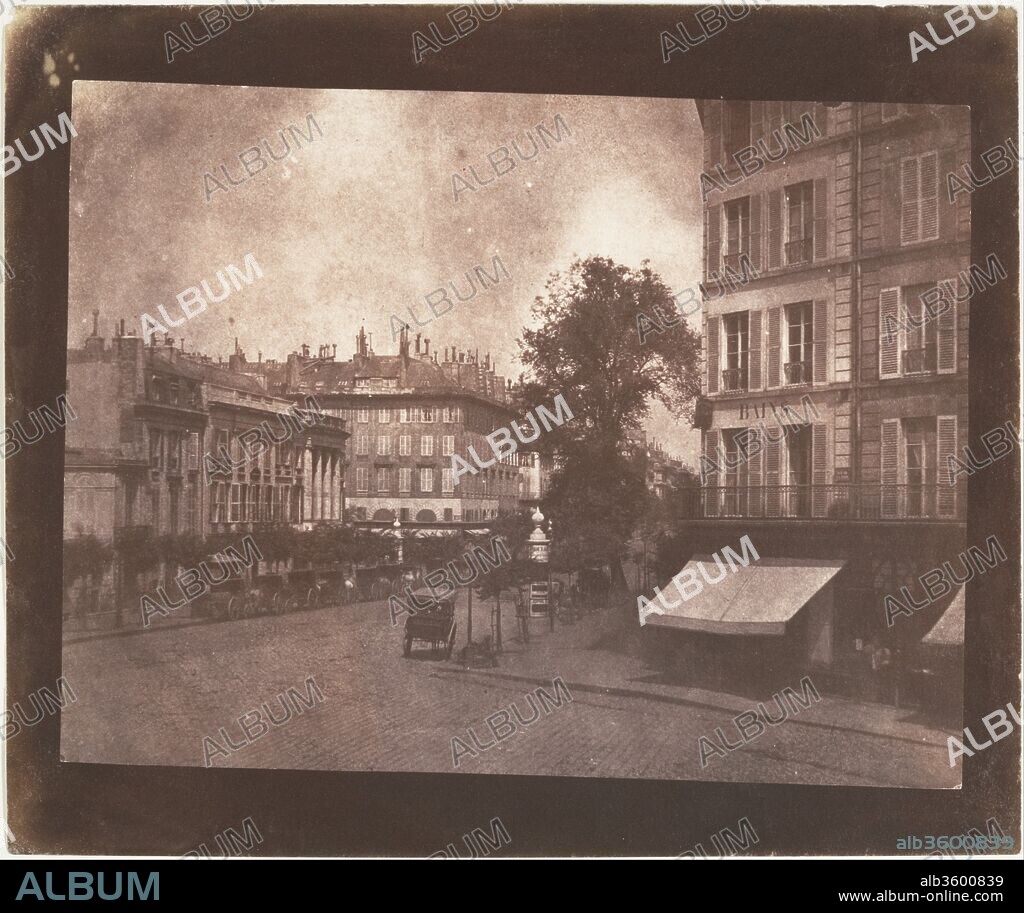alb3600839
WILLIAM HENRY FOX TALBOT. The Boulevards at Paris

|
Añadir a otro lightbox |
|
Añadir a otro lightbox |



¿Ya tienes cuenta? Iniciar sesión
¿No tienes cuenta? Regístrate
Compra esta imagen.
Selecciona el uso:

Título:
The Boulevards at Paris
Descripción:
Traducción automática: Los bulevares de París. Artista: William Henry Fox Talbot (Británico, Dorset 1800-1877 Lacock). Dimensiones: 15,1 x 19,9 cm (5 15/16 x 7 13/16). Fecha: mayo-junio de 1843. Talbot viajó a París en mayo de 1843 para negociar un acuerdo de licencia de los derechos franceses de su proceso de calotipo patentado y, con Henneman, para dar instrucciones de primera mano sobre su uso al licenciatario, el marqués de Bassano. Sin duda emocionado de viajar por el continente con una cámara fotográfica por primera vez, Talbot aprovechó la oportunidad para cumplir la fantasía que había imaginado por primera vez en las orillas del lago de Como diez años antes. Aunque sus arreglos comerciales finalmente no generaron ganancias, las vistas de Talbot de los nuevos y elegantes bulevares de la capital francesa son un gran éxito, un vivo equilibrio con las estudiadas fotografías realizadas en Lacock Abbey. Llena de detalles incidentales de la vida urbana, la ornamentación arquitectónica y el juego de luces primaverales, esta fotografía, a diferencia de muchas de las obras anteriores, no es una pieza de demostración, sino una imagen del mundo real. La animada línea del techo salpicada de chimeneas, el profundo toldo de la fachada, la fila de caballos y carruajes que esperan, los quioscos con carteles y las ventanas con postigos típicamente franceses evocan una noción tan vívida del París de mediados del siglo XIX ahora como deben haberlo hecho cuando. Talbot primero mostró las fotografías a sus amigos y familiares en Inglaterra. Una variante de esta escena, tomada desde un piso superior en el hotel de París de Talbot, apareció como placa 2 en "El lápiz de la naturaleza".
The Boulevards at Paris. Artist: William Henry Fox Talbot (British, Dorset 1800-1877 Lacock). Dimensions: 15.1 x 19.9 cm (5 15/16 x 7 13/16 in. ). Date: May-June 1843.
Talbot traveled to Paris in May 1843 to negotiate a licensing agreement for the French rights to his patented calotype process and, with Henneman, to give firsthand instruction in its use to the licensee, the Marquis of Bassano.
No doubt excited to be traveling on the continent with a photographic camera for the first time, Talbot seized upon the chance to fulfill the fantasy he had first imagined on the shores of Lake Como ten years before. Although his business arrangements ultimately yielded no gain, Talbot's views of the elegant new boulevards of the French capital are highly successful, a lively balance to the studied pictures made at Lacock Abbey. Filled with the incidental details of urban life, architectural ornamentation, and the play of spring light, this photograph, unlike much of the earlier work, is not a demonstration piece but rather a picture of the real world. The animated roofline punctuated with chimney pots, the deep shopfront awning, the line of waiting horse and carriages, the postered kiosks, and the characteristically French shuttered windows all evoke as vivid a notion of mid-nineteenth-century Paris now as they must have when Talbot first showed the photographs to his friends and family in England.
A variant of this scene, taken from a higher floor in Talbot's Paris hotel, appeared as plate 2 in "The Pencil of Nature.".
Técnica/material:
Salted paper print from paper negative
Museo:
Metropolitan Museum of Art, New York, USA
Crédito:
Album / Metropolitan Museum of Art, NY
Autorizaciones:
Modelo: No - Propiedad: No
¿Preguntas relacionadas con los derechos?
¿Preguntas relacionadas con los derechos?
Tamaño imagen:
3798 x 3191 px | 34.7 MB
Tamaño impresión:
32.2 x 27.0 cm | 12.7 x 10.6 in (300 dpi)
Palabras clave:
 Pinterest
Pinterest Twitter
Twitter Facebook
Facebook Copiar enlace
Copiar enlace Email
Email
